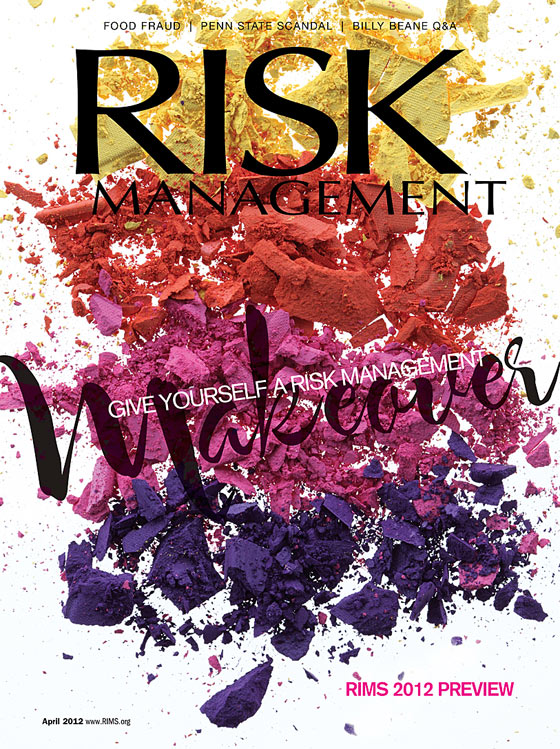 Last year at the RIMS 2011 Annual Conference & Exhibition in Vancouver, RIMS and Chartis launched the Risk Management Hall of Fame. John Pinner, Eldrich Carr, Douglas Barlow, Donald Barrett and Cheri Hawkins were the first five inductees. Today, they were joined by four others who have spent their lives and careers advancing the discipline: Marc Darby, David Haight, Edith Lichota and Ronald Strine.
Last year at the RIMS 2011 Annual Conference & Exhibition in Vancouver, RIMS and Chartis launched the Risk Management Hall of Fame. John Pinner, Eldrich Carr, Douglas Barlow, Donald Barrett and Cheri Hawkins were the first five inductees. Today, they were joined by four others who have spent their lives and careers advancing the discipline: Marc Darby, David Haight, Edith Lichota and Ronald Strine.
“With nearly 150 combined years in the risk management profession, this year’s group of inductees have achieved professional excellence while demonstrating a genuine commitment to advancing the discipline,” said RIMS Executive Director Mary Roth. “It is with great honor that we recognize the careers of these four individuals and welcome them into this elite group.”
Peter Eastwood, president and CEO of Chartis for the Americas, agreed. “This year’s inductees have not only served their companies, but have helped shape the risk management discipline,” he said, “and we are proud to congratulate them on this achievement.”
Below are some highlights from each of their careers.
Marc Darby
Marc Darby’s career at Bombardier spanned almost 30 years before he retired in 1998 as director of risk management and insurance. He increased the profile of the risk manager at the company and helped form a multi-discipline risk management team as Bombardier evolved from a manufacturer of recreational vehicles to a world-leader in the aerospace and rail transit industry. Marc was the president of RIMS from 1983-84, president of Quebec Risk and Insurance Management Association (QRIMA) from 1975-76, winner of the RIMS Harry and Dorothy Goodell Award in 1997 and named to the Business Insurance Risk Management Honor Roll in 1992. He remains an active member of RIMS and QRIMA.
David R. Haight
Before retiring in 1998, David R. Haight has spent more than 35 years as a risk professional at companies including Gould Inc., Ceco Corporation and CF Industries, Inc. He helped form the Northeastern Illinois Chapter of RIMS in 1978 and later served as president. He also served a term as president of the Minnesota Chapter. He was an active RIMS member from 1964-98 and now holds an honorary membership with the organization.
Edith F. Lichota (1929 – 1994)
Edith Lichota began her risk management career in the mid-1960s with a small company in western Ohio, Work Wear, tackling product liability litigation issues. In the 1970s, as assistant treasurer of Carborundum Corp. she fought against the New York State Insurance Department Regulations that would have limited corporations’ risk financing options. In the early 1980s, Ms. Lichota became vice president of government affairs with INA, during which time she supported development of the then-new captive law in Vermont. In 1987, she became the first woman ever named “Risk Manager of the Year” by Business Insurance, one year after having been named “Woman of the Year” by the Association of Professional Insurance Women. Before she passed away in 1994, she also won the highest awards handed out by RIMS, the RIMS Richard W. Bland Memorial Award, and the RIMS Harry and Dorothy Goodell Award.
Ronald E. Strine
Ronald Strine retired from Aetna Life & Casualty in 1992 after 26 years of service, 14 as senior casualty underwriter for Fortune 500 companies and 12 as the director of corporate risk management. In 1979, afte promoted to the position of manager of insurance, safety and security, Ron immediately changed the department’s name to “Corporate Risk Management” and was subsequently promoted to the position of director, a responsibility that included overseeing insurance, safety and security for over 45,000 employees and 100 affiliated companies around the world.
In 1988, Ron was appointed by then Secretary of State George Shultz to the newly created Overseas Security Advisory Council (OSAC) where he was the only risk manager among the council of senior security directors. After earning his CPCU designation in 1970, Ron began a 25-year relationship with The Insurance Institute of America (now The Institutes) as a grader for CPCU and IIA examinations. He also taught RM 54 for many years at the University of Connecticut and later developed the University of Hartford Graduate School curriculum for their course in risk management. He retired in 2005, having served 44 years in the industry.











